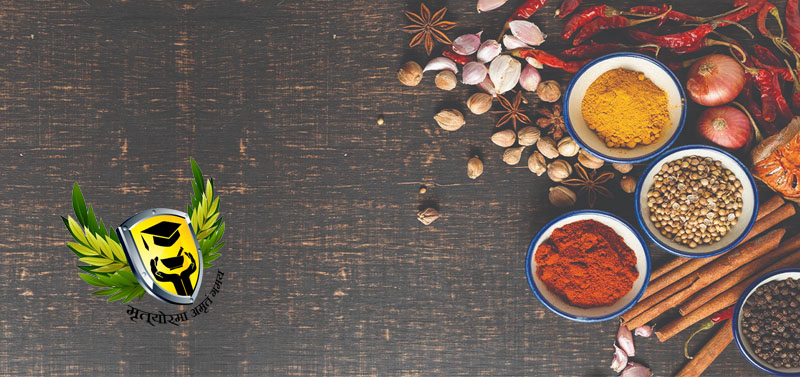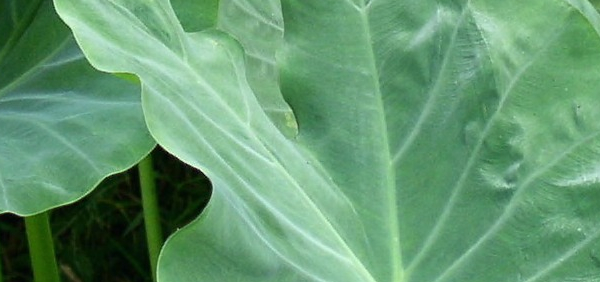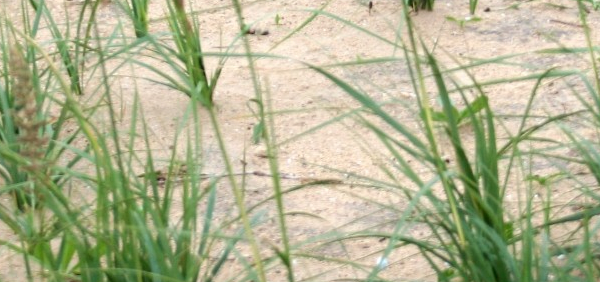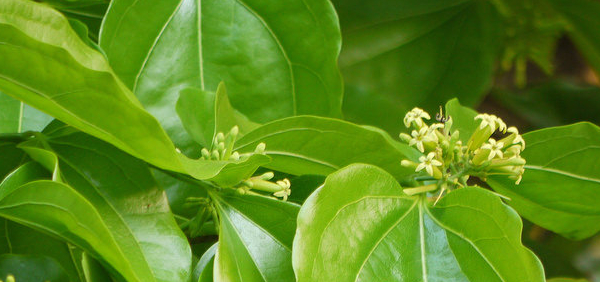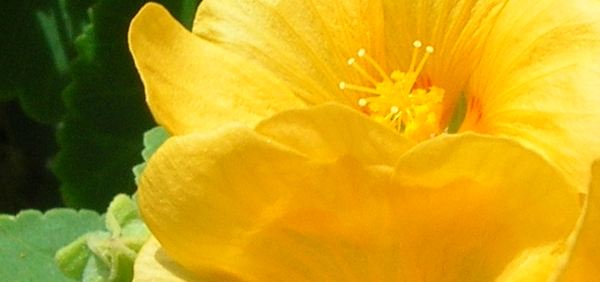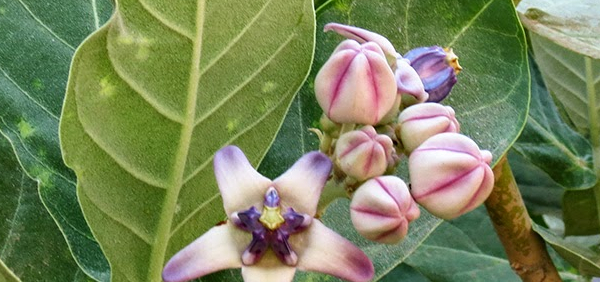chatrii :
 Leea indica is an erect shrub to small tree, often with several stems. It usually grows from 2 - 10 metres tall, occasionally to 16 metres, with stems around 19cm in diameter. Plants are frequently stilt-rooted
Leea indica is an erect shrub to small tree, often with several stems. It usually grows from 2 - 10 metres tall, occasionally to 16 metres, with stems around 19cm in diameter. Plants are frequently stilt-rootedTaxonomical Classification
Kingdom: Plantae - Plants
Subkingdom: Tracheobionta - Vascular plants
Superdivision: Spermatophyta - Seed plants
Division: Magnoliophyta - Flowering plants
Class: Magnoliopsida - Dicotyledons
Family: Vitaceae
Genus: Leea
Species: Leea indica
VERNACULAR NAMES
Sanskrit: Chatri,karkatatjihva, kukurajihvaEnglish: Common Tree-Vine, Jolok-Jolok, Merbati Padang, Bandicoot berry
Hindi: Kikur jihwa
Telugu: Amkador
Bengali: Kurkur, Kukur jiwa, Achila gach, Arengi.
Marathi: Karkani
Tamil: Nalaya, Ottannalam.
Malayalam: Nakku, manipiranta, Njallu- ഞള്ള്, Njazhuku-ഞഴുക്
Kannada: Gadhapatri
Assamese: Ahina
Chinese: 火筒树 Yan tuo
Sinhalese: Burulla/ gurulla
Definition
Latin Leea, a name for tropical small trees or shrubs named for James Lee (1715–1795), who was a nurseryman; Latin indica, from India, referring to one of the countries in its natural distribution range.Synonyms
Synonyms in Ayurveda: chatri, kukkurajihvaLatin Leea, a name for tropical small trees or shrubs named for James Lee (1715–1795), who was a nurseryman; Latin indica, from India, referring to one of the countries in its natural distribution range.
Rasa: Kashaya Tikta
Guna: Laghu
Veerya: Sheetha
Karma: Pittahara
The plant is gathered from the wild for local use as a food and medicine. It is locally cultivated in India and China for medicinal purpose, is often grown as an ornamental, and is also grown as a green manure.
Cultivation:
Succeeds in full or partial sun, preferring a moist, fertile, well-drained soilPlants respond well to coppicing
Propogation:
Seed -Cuttings
Air layering
Harvesting:
Its flowers are pollinated by insects and butterflies. The fruits are eaten by birds, especially bulbuls.Phytochemistry:
PHARMACOLOGY:
Important formulationsParts used for medicinal purpose
Fruit, Leaves, Root, ,Commercial value:
The leaves serve as green manureMorphology:
L. indica is a shrub, treelet or small tree which is measuring 2-10 m tall, with many- or single-stemmed, frequently stilt-rooted while its stems are smooth to pubescent. The leaves are 2-3-pinnate, 7-numerous leaflets, with a size of measure 10-35 cm long rachis and with 10-25 cm long petiole. The obovate stipules are up to measure 6 cm x 4 cm, early caducous, usually hairless, ovate-oblong to ovate-lance-shaped or elliptical to elliptical-lance-shaped leaflets, with a size of measuring 10-24 cm x 3-12 cm, wedge-shaped base to rounded, acute to acuminate apex, serrate to shallowly dentate margin, with small pearl-glands, inconspicuous and rapidly caduceus. The cyme is measure about 10-25 cm long, usually lax, sometimes compact and hairless to pubescent. The bracts are deltoid to narrowly triangular that up to measure 4mm long. The flowers are greenish-white, measuring about 2-3 mm x 3-4 mm sepal and they are smooth to pubescent. The staminodial tube is measure about 2-2.5 mm long which the upper free part is about 1-2 mm long, shallowly retuse lobes, notched or cleft and shallow sinuses. The ovary is 6-celled. The purple-black berry is measure 5-10 mm in diametre and it is 6-seeded. The seed is with a size measure of 5 mm x 4 mmHistology:
Geographical distribution:
ECOLOGICAL ASPECT:
Undisturbed to slightly disturbed (open sites) in mixed dipterocarp, swamp and sub-montane forests up to elevations of 1,200 metres. Usually on alluvial sites and near or along rivers and streams. Also found on limestonePlant conservation:
Not evaluatedGeneral Use:
A decoction of the root is given in colic, is cooling and relieves thirst. In Goa, the root is much used in diarrheal and chronic dysentery. The roasted leaves are applied to the head in vertigo. The juice of the young leaves is a digestive.Therapeutic Uses:
The leaves are used for treating body pains, cuts, fever, skin complaints, vertigo, and wounds. A decoction of the shoots is used to treat sores. Body pains, fevers and insomnia is believed to be cured by beating the body with the leafy shoots. The roots are viewed to be antipyretic and diaphoretic, and are used to relieve colic, diarrhoea, dysentery, muscular pain and to induce perspiration. It is also used to treat leucorrhoea, interstinal and uterine cancer.Systemic Use:
Root considered cooling, digestive, thirst-quenching.- Elsewhere considered anticancer, antioxidant, antidiabetic, antidiarrheal, antidysenteric, antispasmodic.
Administration:
Root decoctionPharmacological:
antioxidant, anticancer, antimicrobial, cytotoxic, analgesic properties.Clinical trials:
Research:
Precautions:
Avoid use during pregnancy and lactationUse in other system of medicine:
CONCLUSION:
Bandicoot Berry or Burulla plant is a evergreen plant native to Sri Lanka, India and Australia. The plant can be found on Waste land forest borders mostly in low country in Sri Lanka. Barks of stem and root are used in Ayurveda for Orthopedist treatmentPhotos of chatrii - ,
- Courtesy: http://tropical.theferns.info/plantimages/c/2/c2f4b30791736891ea33d3faa2f4f13e98287055.jpg
- Courtesy: http://tropical.theferns.info/plantimages/9/d/9dd31ef054e5ed8ce8df5357df0563a9e8d7a0f4.jpg
- Courtesy: http://tropical.theferns.info/plantimages/4/5/45a8eb06539421849f98eec0a851382e61033ba3.jpg
- Courtesy: http://tropical.theferns.info/plantimages/0/b/0b6d597e2c63dc539ede0bd0103b0d220e284257.jpg
- Courtesy: http://tropical.theferns.info/plantimages/4/5/45a8eb06539421849f98eec0a851382e61033ba3.jpg
- Courtesy: http://tropical.theferns.info/plantimages/a/0/a000b912fa6abb3a423609ae330e0e6c4039f22e.jpg
- Courtesy: http://tropical.theferns.info/plantimages/3/8/38d84c80d4320b231e454e28072f6b2ce95cbc96.jpg
- Courtesy: http://tropical.theferns.info/plantimages/0/a/0adefb8cc9448194cf0401ed89ceb8754694156a.jpg
- Courtesy: http://tropical.theferns.info/plantimages/6/2/629c8aa261df60bc325c2cc9bd8dce28159d5627.jpg
KEY WORDS: chatrii , Leea indica (Burm.f.) Merr., Leea sambucina Linn.
- » Classification and names of chatrii
- » Synonyms and definitions of chatrii
- » Drug Properties of chatrii
- » Chemical Constituents of chatrii
- » Standardization of chatrii
- » Parts used and Dosage of chatrii
- » Morphology and Histology of chatrii
- » Distribution and Conservation of chatrii
- » Cultivation of chatrii
- » chatrii in the market
- » Medicinal Uses of chatrii
- » Researches and clinical trails of chatrii
- » chatrii in other sytems of medicine
- » Ayurvedic formulations with chatrii
- » Images of chatrii












